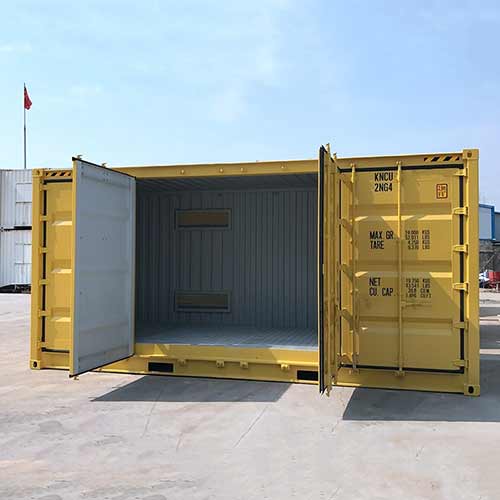E-mail : sale@heroeq.com
(1) Confirmation of dangerous goods
For any dangerous goods entering or leaving through the terminal (except for Category 6 and 8 non-refrigerated dangerous goods listed in the International Dangerous Regulations), the owner, shipping company or its agent must declare to the port in advance, and the ship can only carry it after obtaining the consent. The "Declaration for the Safety of Ships Carrying Dangerous Goods Containers" shall be processed, and the ship can be loaded and unloaded only after approval.

(2) Handover of Dangerous Goods Containers
Before unloading a dangerous goods container, the terminal tally staff carefully checks the box body, the lead seal and the dangerous goods signs corresponding to the goods in the box, and carefully checks the box number. If any discrepancy or abnormality is found, the ship is notified and recorded.
When the export dangerous goods container enters the terminal, the carrier needs to hold the "Container Loading Dangerous Goods Packing Certificate" signed by the Hong Kong Superintendent. The staff of the inspection bridge carefully check the box, the lead seal and the dangerous goods signs corresponding to the goods in the box, and refuse to accept it if it does not match.
(3) Loading and unloading of dangerous goods Containers
The regulations and conditions of each port are different. For example, some ports must use vehicle-ship, ship-vehicle direct pick-up for containers containing Class 1, 2, 7 and frozen dangerous goods listed in the International Dangerous Regulations. The direct loading method shall be adopted as far as possible for containers containing 3, 4.2, 4.3, 5.1 and 5.2 listed in the "International Dangerous Regulations".
Before the unloading of dangerous goods containers, precautionary measures for safe operation and first aid measures shall be arranged and implemented.
(4) Storage of Dangerous Goods Containers
Dangerous goods container stacking is generally only allowed to stack two layers according to the difference of dangerous goods, and according to the isolation requirements of the "International Dangerous Regulations", the dangerous goods of different natures are effectively isolated.
Dangerous goods containers are stacked in the dedicated dangerous goods container area, and isolation barriers and spraying devices should be provided to spray and cool some sprayable dangerous goods containers in high temperature seasons.
24 How are Equipment Containers classified?
The job is a special container of the open top type, which is an open container without a top or top. Cranes are necessary for loading and unloading goods from the top of the container. Containers with mechanical equipment such as glass, steel products, plywood, mechanical equipment, etc. can be used for the introduction of various types of containers for fixed weights and structural containers, and it is difficult to load and unload goods.
Structural special container is a container without top, wall and detachable end wall. As long as the bottom of the box and the four corners of the container can be fitted. This container is not intended for loading or growing containers.
Overweight, bulky goods, heavy machinery, steel, steel pipes, no equipment, can produce concentrated load heavy goods, the size of the goods, the goods are not afraid of wind and rain, they need to be loaded from the top of the box or the goods, and need to be fixed in the goods.
Most containers are bulk powder containers such as soybeans, rice, malt, flour, feed and cement, resin, borax and chemical raw materials. Some products require phytosanitary, such as imported food, and some require fumigation elsewhere than in Hong Kong. The port for fumigation of traditional Chinese medicine can be set in the bulk container, and it can also be exported by the fumigation gas. During the fumigation process, the container can be completely sealed.
This is a container for liquid goods such as alcohol, petroleum, chemicals and dangerous goods. Such containers have special structures and equipment suitable for transporting these goods. When loading, the goods are imported from the loading port on the roof. When unloading, the goods are discharged from the bottom discharge hole, or suctioned from the loading port.
Kommentti
(0)